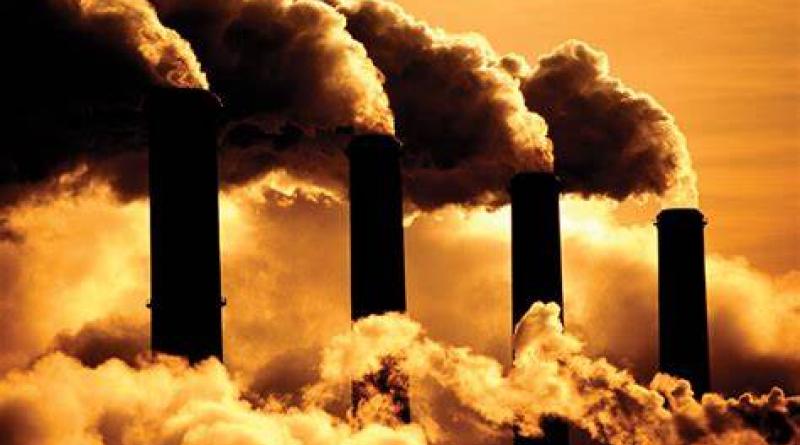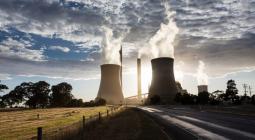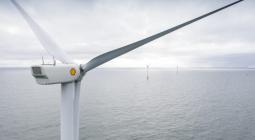Capturing Carbon With Machines Is a Failure—So Why Are We Subsidizing It?

Human activity—mostly the burning of fossil fuels—has raised Earth’s atmospheric carbon content by 50 percent, from 280 parts per million (ppm) to 420 ppm. Since the start of the Industrial Revolution, we’ve released approximately 950 billion metric tons of carbon into the air. Every year, humans emit more than 40 billion metric tons of carbon dioxide (CO2) into the atmosphere, as of 2021 measurements. Even if we stop burning fossil fuels now, the amount of CO2 already in the atmosphere will cause Earth’s climate to continue warming for decades, triggering heat waves, droughts, rising sea levels, and extreme weather.
Climate scientists warn that if we want to avert catastrophe, a significant amount of excess atmospheric CO2 must be captured and sequestered. The process is called carbon dioxide removal (CDR), and it has been receiving more attention as nations, states, and industries strive to meet their climate goals. But how should we go about doing it?
There are two broad strategies: biological and mechanical. Nature already absorbs and emits about 100 billion metric tons of carbon dioxide every year through the natural processes in the biosphere—including plant growth—an amount 2.5 times humanity’s annual carbon output. So, according to advocates for biological carbon removal, our best bet is simply to help the planet do a little more of what it is already doing to absorb carbon. We could accomplish this through reforestation, soil-building agricultural practices, and encouraging kelp growth in oceans.
On the other hand, advocates for mechanical carbon removal point to technologies that successfully capture CO2 in the laboratory; if these machines were scaled up, those advocates tell us, we could create an enormous new industry with plenty of jobs while removing atmospheric carbon and reducing climate risk. Scientists are exploring several chemical pathways for direct air capture (DAC) of carbon and ways to sequester CO2 in porous rock formations. Revenue streams come from government subsidies or from the use of captured CO2 in enhanced oil recovery (EOR).
So, which pathway—nature or machines—holds more promise?
In its sixth assessment report, released in March 2023, the Intergovernmental Panel on Climate Change (IPCC), the United Nations body that regularly assesses the current state of climate science, points out that “biological CDR methods like reforestation, improved forest management, soil carbon sequestration, peatland restoration[,] and coastal blue carbon management can enhance biodiversity and ecosystem functions, employment[,] and local livelihoods.”
On the other hand, notes the IPCC, the implementation of mechanical DAC along with underground sequestration of CO2 “currently faces technological, economic, institutional, ecological-environmental and socio-cultural barriers.” Further, the current global rates of mechanical carbon capture and storage “are far below those in modeled pathways limiting global warming to 1.5°C to 2°C.”
In a study published in the journal PLOS Climate in February 2023, a team of American scientists analyzed the benefits and downsides of the two pathways in detail. They used three criteria: effectiveness (“[d]oes the process achieve a net removal of CO2 from the atmosphere” once all inputs and outputs are accounted for?), efficiency (“[a]t a climate-relevant scale… [of a billion metric tons of CO2 per year], how much energy and land are required?”), and impacts (“[w]hat are the significant co-benefits or adverse impacts [on nature and society]?”).
The team gathered data and crunched the numbers. The lead author, June Sekera, a carbon researcher and visiting scholar at the New School for Social Research in New York, concluded:
“[B]iological sequestration methods, including restoration of forests, grasslands, and wetlands and regenerative agriculture, are both more effective and more resource efficient in achieving a climate-relevant scale of CO2 removal than are techno-mechanical methods—which use machinery and chemicals to capture CO2. Additionally, the co-impacts of biological methods are largely positive, while those of technical/mechanical methods are negative. Biological methods are also far less expensive.”
In this comparative study, the scores for natural versus mechanical carbon removal methods were not close: Natural methods won in every category—and by a significant margin. The problem with machine-based carbon removal is not just that current technologies are immature (with the hope of getting better with more research and investment), but also that using machines is inherently inefficient, costly, and risky. On the other hand, removing carbon by restoring nature costs less, is more effective at reducing atmospheric carbon, and offers numerous side benefits.
The American study also noted that its findings “that biological methods exhibit superior effectiveness in comparison to DAC are consistent with data reported in the 2022 IPCC study.” It added in plain terms: “According to the IPCC, not only are biological methods of CDR more effective than DAC…, but their effectiveness is projected to increase significantly over time.”
As if to underscore that conclusion, a separate study published in March 2023 in the journal Nature Climate Change concluded that the protection and rewilding of even a small targeted group of wildlife species would help facilitate the capture and storage of enough carbon to keep the global temperature below the tipping point of warming 1.5 degrees Celsius above pre-industrial levels.
You might expect, therefore, that policymakers would currently be directing all of their support toward natural carbon removal methods. But you’d be wrong. Government policy support in the form of subsidies is being shoveled mostly into mechanical carbon removal.
In the U.S., the primary subsidy for mechanical CDR is the federal 45Q tax credit, introduced in 2008, which offers $10 to $20 per metric ton of CO2 captured and stored. But there are also carbon offset credit programs (including the California Low Carbon Fuel Standard), subsidies for building CO2 pipelines, and subsidies for the production of alternative fuels (including ethanol and hydrogen) that rely on carbon capture technology to be considered “low-carbon.” The Inflation Reduction Act of 2022 significantly increased the number of credits in 45Q and broadened eligibility, and included federal subsidies for oil producers who pump CO2 underground to make it easier to extract trapped petroleum—which is by far the most common way of using captured CO2.
The Bipartisan Infrastructure Law, which President Biden signed in November 2021, included billions in federal funding for carbon capture projects. In the Midwest, as a result, there has been a rush to build thousands of miles of CO2 pipelines for carbon sequestration—a frenzy that has set off regulatory chaos and is pitting farmers and Native Americans against biofuel plant operators and venture capitalists. Researchers continue to spend time and money finding new chemical pathways to mechanical CO2 capture—resources that could instead be diverted to biological CO2 removal methods. Even AI is being enlisted in mechanical carbon capture efforts.
There are also subsidies that, in effect, promote nature-based CDR methods, including soil conservation and wetlands restoration programs, but these programs were not initially intended for carbon capture and sequestration, and they are not optimized for that purpose. In November 2022, at the global COP27 climate summit in Cairo, the Biden administration announced the “Nature-Based Solutions Roadmap,” an outline of strategic recommendations to put America on a path to “unlock the full potential of nature-based solutions” to address “climate change, nature loss, and inequity.” The roadmap calls for updating policies, providing funding, training a nature-based solutions workforce, and prioritizing research, innovation, knowledge, and adaptive learning to advance nature-based solutions. However, the roadmap remains, for the most part, in the realm of good intentions.
There’s only so much funding available for climate solutions, and the total amount is woefully inadequate. Only strategic investment will obtain significant results for the dollars spent, and it is now clear which path will get results.
Given the clear superiority of nature-based solutions, why is so much support still going toward mechanical carbon capture? Poor judgments in the past have created funding streams and projects with a momentum of their own. Most of the gold-rush fever surrounding mechanical carbon capture can be attributed simply to the lure of subsidies for building new DAC plants and pipelines.
In a 2018 article published by the Thomson Reuters Foundation, Justin Adams—who at the time was the managing director for global lands at the U.S.-based environmental nonprofit Nature Conservancy—urged the European Union to take the lead on using nature-based solutions in the climate crisis fight. “Many economists and policy advisors ignore the potential of natural climate solutions at our peril,” warned Adams’s article, calling a 2018 report by the European Academies’ Science Advisory Council (EASAC) “short-sighted” for downplaying the potential of nature-based climate solutions.
“Natural climate solutions are in fact the world’s oldest negative emissions technology,” Adams wrote. “By managing carbon dioxide-hungry forests and agricultural lands better, we can remove vast quantities of greenhouse gases from the atmosphere and store them in trees and soils.”
The science tells us that policymakers and investors have so far been wrong to advocate so strongly for mechanical CDR solutions to the detriment of biological ones. The fate of future generations is at stake, and we cannot afford to waste both time and money on techno-fixes that are ineffective at achieving our climate goals. The clear path forward to addressing the looming catastrophic effects of climate change is to restore nature.
cover photo: nationalvanguard.org





